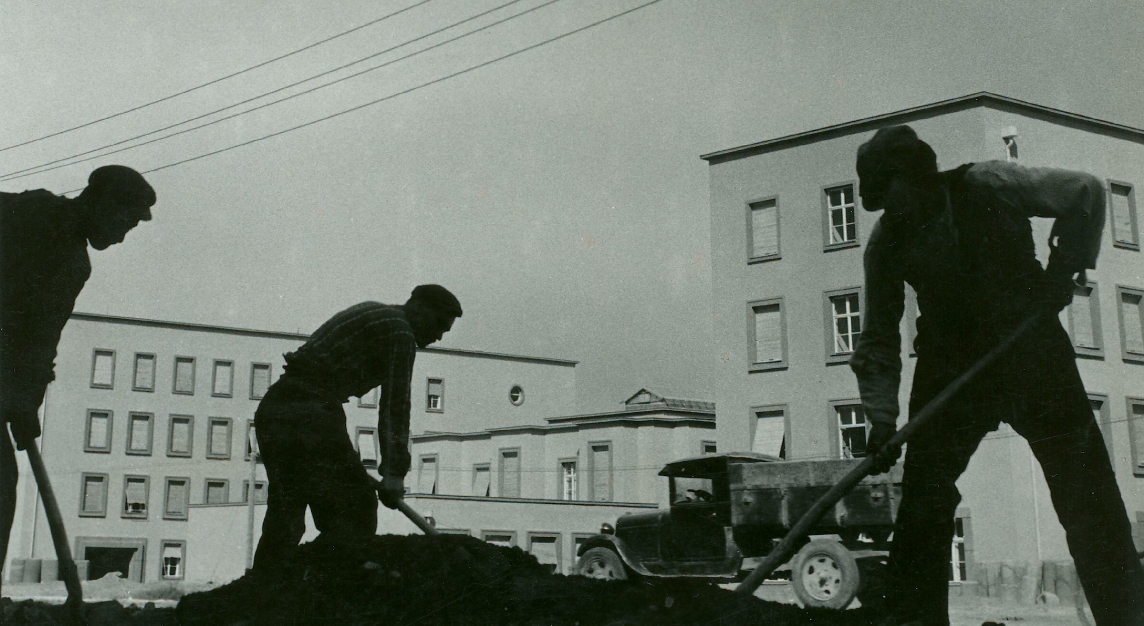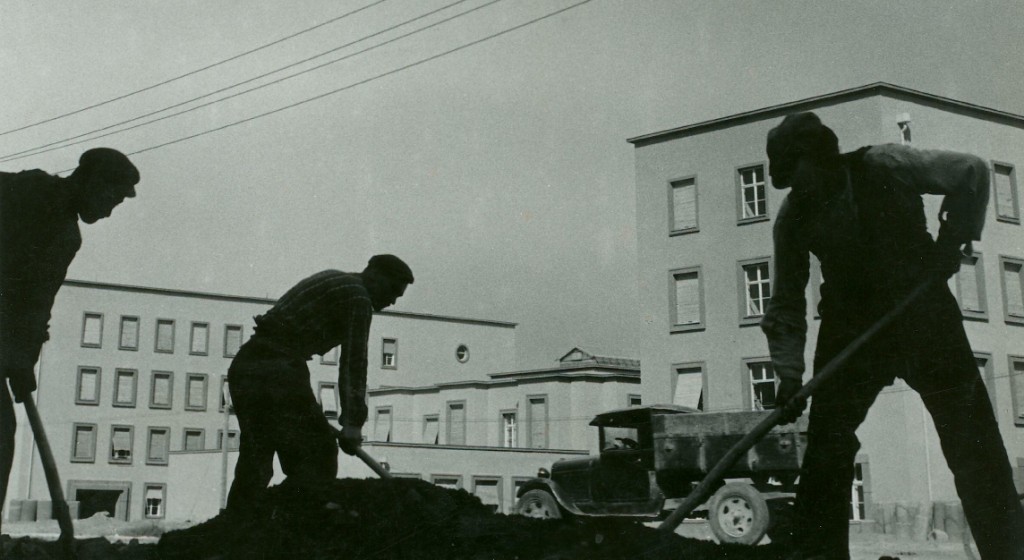The Making of Modern Ankara: Space, Politics, Representation
An international symposium organised by the Architecture Research Group at the University of Westminster in conjunction with SOAS Seminars on Turkey was held on Friday 23 November 2012 at the University of Westminster. The half-day symposium was convened by Dr Davide Deriu and brought together a panel of scholars from architecture, planning, art history, heritage and Turkish studies to revisit the making of modern Ankara in a cross-disciplinary perspective, while also debating its legacy on the eve of the Republic’s 90th anniversary.
The following are the abstracts of the papers presented at the symposium.
Elvan Altan Ergut
Middle Eastern Technical University, Ankara
Building for the Nation State and the Economy: The Banks Street in Ankara
The Banks Street in Istanbul played a significant role in the financial life of the Ottoman Empire in the second half of the nineteenth century with the establishment of many banks and companies in other new sectors of the economy. The banking sector became even more essential for the economy after the disintegration of the Ottoman Empire and the foundation of the new Turkish state in the early twentieth century. The banks that had been founded during the Ottoman period were mostly foreign investments – at least partially. The new state aimed at a national system of banking for economic independence, hence financially supported the founding of national banks. Bank buildings were then constructed along the new Banks Street, in the very center of the new capital city, together with the buildings that housed the new political administration. This paper analyzes the Banks Street in Ankara, focusing on the contextual as well as architectural characteristics and discussing the political and economic changes brought about by the Turkish Republic – also in comparison to the Ottoman experience in these terms.
Martina Becker
ENGLOBE/Marie Curie, Middle East Technical University, Ankara
The Institutionalisation of Popular Art in Republican Ankara
This paper seeks to supplement the different perspectives on Ankara with a look into the artistic activities in the early Republican capital. Central in this regard has been the Image-Craft Department [Resim-İş Bölümü] at the Gazi Teachers-Training School and Education Institute [Gazi Orta Muallim Mektebi ve Terbiye Enstitüsu]. Much like Ankara was meant to embody the model for Turkish cities, the Image-Craft Department was conceived as an example for art education in schools and community centres all over the country. Accordingly, the energies and means invested into the Department were enormous. Its agency in Ankara’s artistic domain alone justifies the study of the Department. The main reason, however, why this Department is central to this paper is its very peculiar approach to art, which cannot be labelled as ‘Turkish’ or ‘Western’ either. On the one hand, the first faculty members of the Department chiseled their professional profile outside of Turkey, mainly in Germany. On the other hand, they demonstrated a strong interest in the local. By following the actors, the linkages between the domestic and international activities come to the fore while the possibility or even the sense of re-producing clear-cut geographical delineations gradually vanishes. The paper concentrates on one of the first faculty members, Malik Aksel. After a general introduction to the Image-Craft Department, its situation within the city and its over-all approach to creative practices, the paper focuses on Malik’s studies – which were conducted in Istanbul, Berlin, and in a small village in Sweden. Lastly, it surveys his activities as a teacher and artist in Ankara. In doing so, the paper provides insights into the very individual experience of, and participation in, the Republican momentum of Ankara.
Eray Çaylı
University College London
Architecture, Politics and Memory Work: Ankara’s Ulucanlar Prison Museum
A recent period in Turkey’s history, which was marked by a series of military interventions in politics, has emerged in the past decade as a major reference point for various political discourses and rights-seeking movements in the country. In addition to this sociopolitical legacy, the period has also left a particular sort of architectural heritage to today’s Turkey. This heritage consists of sites that witnessed atrocious events during the period. While most of these sites continue to serve purposes irrelevant to the events in question, the Ulucanlar Prison in Ankara was the first among them to adopt a memorial-museal function. Prior to its redesign in 2010 as the Prison Museum, Ulucanlar served as a penitentiary from 1925 to 2006. In many respects, this makes the site a standing witness to the complicated political history of the Republic of Turkey. Providing an account of Ulucanlar’s history as a prison, its features as a museum, and the discussions around its museumification, this essay seeks to unveil the sociopolitical ramifications of this recent architectural transformation.
Davide Deriu
University of Westminster
The Journey to Ankara: ‘New Turkey’ in Western Imagination
Following its proclamation as capital of the Turkish Republic in 1923, Ankara became the laboratory of the nation-building project led by Mustafa Kemal Atatürk. As has been widely documented, a number of European architects and planners were actively involved in the transformation of this small Anatolian town into the political and symbolic centre of ‘New Turkey’. Ankara also attracted many Western travellers who were drawn to witness and describe the making of ‘the most extraordinary capital in the world’. At a crucial juncture, in which the geopolitical space of the Orient was radically reconfigured, Ankara provided an unexpected terrain of cross-cultural encounters between East and West. This paper explores the historical traces of these encounters through the analysis of an uncharted body of sources, ranging from early-1920s travel accounts to the assessments of the city published in the 1930s. This multifaceted discourse shows that Republican Ankara became a contested field of representations that posed a challenge to the Western system of knowledge about the Orient.
Zeynep Kezer
University of Newcastle
Ankara: An archaeology of Unremembered Histories
Ankara rose to prominence as the staging ground of the Turkish Independence War, waged by the nationalists to liberate the country from post-WWI occupation (1919-1922). In 1923, upon victory, the nationalists proclaimed Ankara as the capital of the new republic. Building a modern capital was central to their efforts to reinvent Turkey as a nation-state, pronouncing a definitive break with the Ottoman past. In the preceding decades, Ankara had endured a string of disasters, experienced economic decline, and suffered significant population loss. Especially the forced deportation of the Armenians—with catastrophic consequences—during WWI, followed by the exchange of the Orthodox Christians with Greece had decisively changed Ankara’s demographic makeup. Despite their ambivalences about the particulars of this process, the nationalists mistrusted non-Muslim communities as potentially divisive and saw in their departures an opportunity for reinforcing a sense of national homogeneity. Bereft of its diversity, Ankara was seen as a tabula rasa on which to inscribe the structural transformation of the state. Contrary to its official depictions, however, Ankara was far from being a tabula rasa: the making of Turkey’s new capital was as much a process of physical and symbolic construction as it was of destruction. The nationalists considered the persistence of diverse cultural artifacts as vessels of alternative memories that were incompatible with the unifying narratives of nationalism they sought to inculcate in the citizenry. They consequently moved to appropriate and reinscribe public and private sites pertaining to Ankara’s non-Muslim communities with new uses and meanings. A substantial portion of new development in Ankara occurred on land that had been seized from these entities, erasing the physical traces of their existence. The continued omission of this process of destruction has long afflicted not only architectural history, but Turkish historiography in general, downplaying the overwhelming frictions during this profound transformation and their long term consequences.
Melania Savino
SOAS, Kunsthistorische Institut Florence
The display of the ancient past in modern Ankara
The disciplines of archaeology and museology underwent a profound reformation after the foundation of the Turkish Republic in 1923. They became main fields of investment for the government aiming to create a national identity and to legitimize the newborn Republic of Turkey. The Kemalist idea was to found a new state with new traditions, a common heritage to share within the Turkish boundaries, while rejecting the multi-cultural past of the Ottoman Empire. Numerous excavations were conducted in Anatolia, starting in the 1930s, and consequently the archaeological museums were intended to play an important role in showing to the larger public the new archaeological discoveries. This paper explores the change occurred in curatorial practices and the display of antiquities in relation to the national identity of Turkey after the establishment of the Republic. In particular, the case of the Museum of Ankara represents the main institution founded to display the new archaeological discoveries of the Republican period. At the establishment of the Republic only a small depot existed in the citadel where objects had been preserved from the war. In the following years, antiquities from different periods (Hittite, Greek, Roman, Phrygian, Byzantine) were displayed in the Museum of Ethnography, the Temple of Augustus and the Bedesten. In the 1930s, the formulation of the Turkish History Thesis encouraged the government to devote an entire museum to the display of the newly-discovered Hittite finds. Focusing on the early archaeological museums set up in Ankara, the paper looks into the public negotiation of the new Republican identity through material culture over time. It explores the impact that dominant representations have had on the interpretations of archaeological objects in Turkey, and discusses the new relationship between the state and the museums that was established through the visual representation of the past.
For further information contact the symposium’s convenor, Dr Davide Deriu at D.Deriu@westminster.ac.uk

